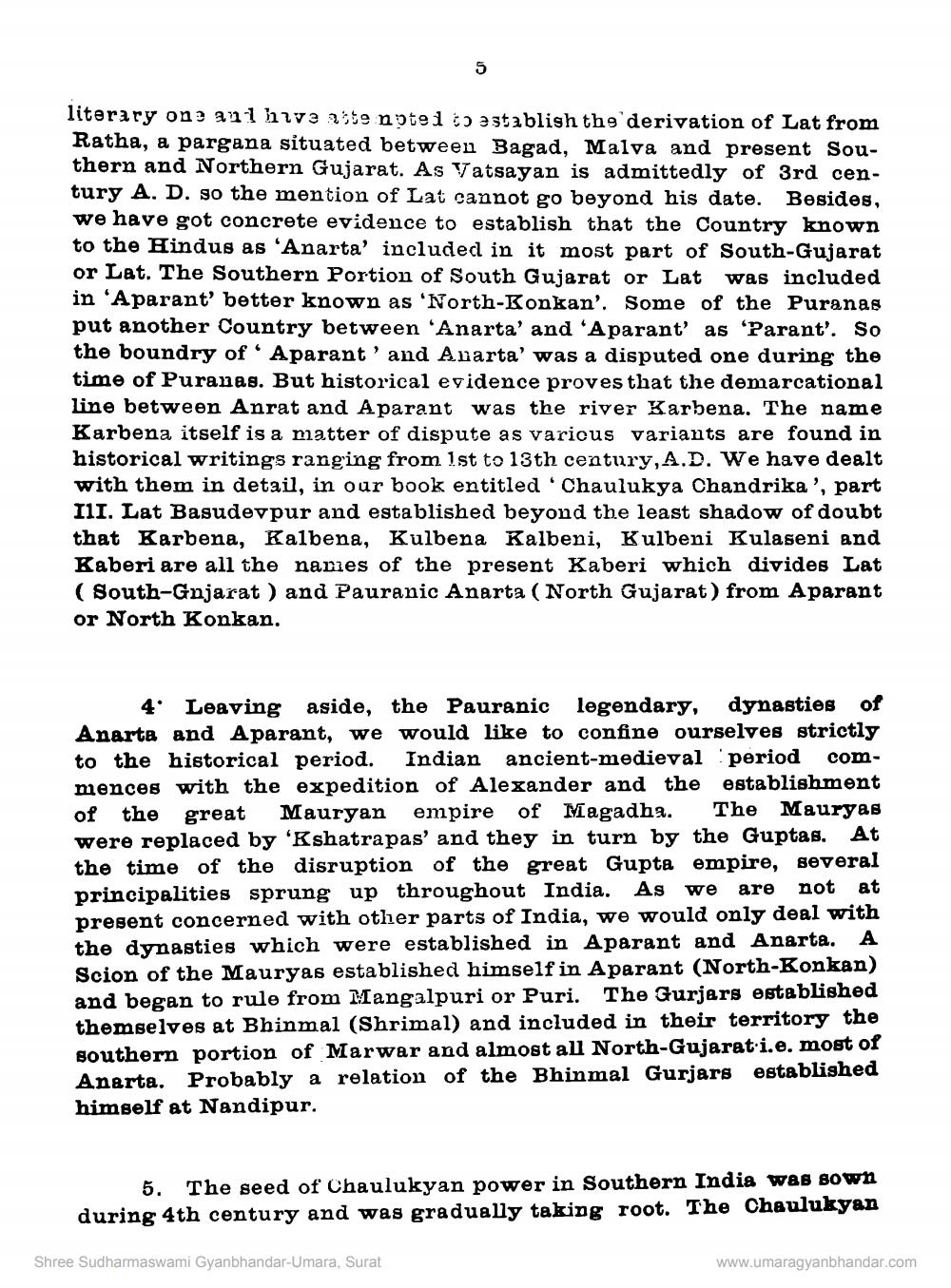________________
literary on 21 hivaste nyte i to establish the derivation of Lat from Ratha, a pargana situated between Bagad, Malva and present Southern and Northern Gujarat. As Vatsayan is admittedly of 3rd century A. D. so the mention of Lat cannot go beyond his date. Besides, we have got concrete evidence to establish that the Country known to the Hindus as 'Anarta' included in it most part of South-Gujarat or Lat. The Southern Portion of South Gujarat or Lat was included in 'Aparant' better known as 'North-Konkan'. Some of the Puranas put another Country between 'Anarta' and 'A parant' as 'Parant'. So the boundry of ' Aparant' and Anarta' was a disputed one during the time of Puranas. But historical evidence proves that the demarcational line between Anrat and Aparant was the river Karbena. The name Karbena itself is a matter of dispute as various variants are found in historical writings ranging from 1st to 13th century, A.D. We have dealt with them in detail, in our book entitled 'Chaulukya Chandril III. Lat Basudevpur and established beyond the least shadow of doubt that Karbena, Kalbena, Kulbena Kalbeni, Kulbeni Kulaseni and Kaberi are all the names of the present Kaberi which divides Lat (South-Gnjarat ) and Pauranic Anarta (North Gujarat) from Aparant or North Konkan.
4* Leaving aside, the Pauranic legendary, dynasties of Anarta and Aparant, we would like to confine ourselves strictly to the historical period. Indian ancient-medieval period commences with the expedition of Alexander and the establishment of the great Mauryan empire of Magadha. The Mauryas were replaced by 'Kshatrapas' and they in turn by the Guptas. At the time of the disruption of the great Gupta empire, several principalities sprung up throughout India. As we are not at present concerned with other parts of India, we would only deal with the dynasties which were established in Aparant and Anarta. A Scion of the Mauryas established himself in Aparant (North-Konkan) and began to rule from Mangalpuri or Puri. The Gurjars established themselves at Bhinmal (Shrimal) and included in their territory the southern portion of Marwar and almost all North-Gujarat'i.e. most of Anarta. Probably a relation of the Bhinmal Gurjars established himself at Nandipur.
5. The seed of Chaulukyan power in Southern India was sown during 4th century and was gradually taking root. The Chaulukyan
Shree Sudharmaswami Gyanbhandar-Umara Surat
www.umaragyanbhandar.com




